|
WESSEX
MISCELLANY
MOVE
over, you Essex lasses - the Wessex
Girls are here.
from The
Sun Newspaper

Party girls ... Wessex women
Charlotte Smith and Kelly Edwards
They
are West Country and very up-fronty
... 65 per cent said in a survey on
dating website countrysidelove.co.uk
that they would sleep with a man on a
first date. Here, REBECCA LEY chats
to two girls from the nation's newest
hot-to-trot spot about dating and
mating. It must be something to
do with all that fresh air
|
Charlotte
Smith, 24
Fun-nel times
... Charlotte Smith on a
night out
CALL centre worker
Charlotte is from Bristol.
FIRST-DATE
CONQUESTS:
3
She says: "I would
consider myself to be a proper
West Country girl - we're loud,
outgoing and always up for a
laugh.
"A typical night out
would start with me and a few
mates, usually ten of us, getting
dolled up round someone's house.
"We get through a few bottles of
wine there and, once we are
looking fabulous, we go on to a
couple of bars then a club.
"West Country girls
know how to let their hair down. I
think that relaxed attitude is why
we are happy to have a roll in the
hay without worrying about what
other people will think of us.
"We are just less
stressed down here. The pace of
life is undoubtedly slower.
"I don't go out to pose, I go out
to get involved. When it comes to
blokes, me and the girls like to
be the predators.
"If I see a
good-looking bloke on the dance
floor or at the bar I'm not going
to wait for him to come over, I'll
go and introduce myself to make
sure I get what I want.
"I don't go out
specifically to have a one-night
stand, but if it goes that way
then I don't care. "Guys do it all
the time, so why not girls? I have
had sex three times on the first
date.
"It is nice to have
fun without any strings, as long
as both of you are up for it, why
not? "I love sex, I'm proud of it
and I'm always careful."
"People try to
pigeonhole girls who like sex as
slags but it is not like that at
all. We're strong women who like
to take control. "We want to have
some fun. I don't think there's
anything wrong with that.
|
|
Kelly
Edwards, 22
RECRUITMENT consultant
Kelly is from Bristol.
"I love the West
Country, the parties are
rowdy, the girls are up for
partying - and the blokes are
fit. A perfect combination."
FIRST-DATE
CONQUESTS: "Several"
She says: "Girls from this part
of the world are definitely up
for a laugh. "We are more
party-minded than some other
parts of the country - I think
it goes with a more relaxed pace
of life. "What you see is what
you get.
We don't feel the
need to hold anything back and
if that down-to-earth attitude
extends to meeting blokes, then
I don't see that there's any
harm done. "I have slept with
several men on the first date
and I don't see anything wrong
with it.
Berry sexy ...
Kelly all dolled up
"It's good to try
before you buy, that way you work
out if you really like someone or
not. "When I first meet
someone, it's all about their
looks initially, but then you rely
on how well you get on with them
to establish whether there is any
chemistry between you.
"Then if you want
something to happen, it should be
up to you."At
the end of the day, the only
person you should have to justify
yourself to is the one you see in
the mirror.
"I don't see why
anybody should judge anybody else.

Here's a tidy
little package
|
|
"I have also got
together with a man after a formal
first date - it isn't always just
after meeting them in a club.
"One bloke took me
out for dinner and then a boat
pulled up outside to take us to a
champagne bar.
"He had
arranged it all. It was so
romantic and exciting that we
ended up sleeping together that
night.
"I don't
think West Country girls are the
new Essex girls though.
"That was a
traditional perception of blonde
hair and fake boobs - we're not
anything like that.
"I think when that
idea was created, women were less
in control of their lives than
they are now.
"Now it's a woman's
world.
"We
really are the ones in charge and
if that extends to enjoying our
sex lives then what's the harm?
"I will go out with
a group of girlfriends every
weekend.
"Sometimes there
will be up to 15 of us and it
would be fair to say that we get a
bit of attention.
"But we're young, we
may as well enjoy it.
"I have had three
long-term relationships. One
developed after I had slept with
someone on a first date.
"At the moment I'm
single. It's less hassle than a
relationship and I'm in no rush to
get coupled up again.
"I'm having the time
of my life."
What
they wear
Wessex wear ...
ugg boots
NOT white stilettos
and mini skirts - they have a more
rural, laid back style.
Micro-shorts and Ugg
boots are in, but they are just as
happy in jeans and a T-shirt.
Belts slung around
the hips are also a big craze -
Sienna Miller was doing it three
years ago, but boho-chic still
rules here.
Wessex Girls want to
look hot, but not like they've
tried too hard.
What they say
IF a Wessex Girl
likes a man they will call him
"lush". Their capital of fun,
Bristol, is called "Brizzle".
"How are you?"
translates as "Alright me luvver?"
and "Where is it?" becomes "Wer
zat to?"
If they're pleased -
particularly after a fruitful
first date - they might come out
with "Proper job" or "Mint,
innit!".
If you want to
poke fun at a Wessex girl try
these jokes ...
Where
they're
to ... Wessex country
A WESSEX
girl put an ad in the
classified section of
a newspaper saying:
Husband wanted.
Next
day she received a
hundred letters. They
all said: "You can
have mine."
Q: What's the mating
call of the Wessex Girl?
A: "I'm sooo drunk!"
Q: How did the
Wessex Girl break her leg raking
leaves?
A: She fell out of
the tree
Q: How many Wessex
girls does it take to make a batch
of chocolate chip cookies?
A: Five. One to make
the mixture and four to peel the
Smarties.
Q. WHAT does a Wessex girl never
leave home without?
A. Her hyphen!
DO YOU KNOW ONE?
ARE you a Wessexy
girl or do you know someone who
is?
Email your
tales of sexy West Country
women to features@the-sun.co.uk or write
to: Wessexy, The Sun, 1
Virginia St, London E1 9BD.
|
|
On The Other
Hand This is The Independant Defination of
Wessex Girl
What do
sociologists describe as "a Wessex
Girl"?
|
 Unlike Sloanes, who cling to
their class background with goofy,
panicky enthusiasm, Wessex Girls are
generally uninterested in social
position. They are reasonably
well-bred, of course most of them
were raised in the home counties or in
the smarter parts of the Chilterns
but they have discovered that, in
modern Britain, overt snobbery is a
career liability. On the other hand,
unlike Essex Girls, they have not the
slightest interest in drinking to
excess, staggering about at parties or
using inappropriate language.
Although it has been a
good five years for Wessex Girls,
their sphere of influence is in
particular areas. They never work in
the City, finding the barrow-boy,
fast-buck ethic distasteful, and the
idea of joining a firm that actually
makes something has never appealed
there is something about the words
"manufacturing" and "product" that
makes their hearts sink. Working as
some kind of high-level facilitator or
intermediary is their strength. They
put people in touch with one another,
quietly use their efficiency and
superior classlessness to market and
promote. Although you might find a few
of them as partners in a blue-chip
estate agency or running one of the
more fashionable charities, it is the
media that is their natural home.
Wessex Girls learnt the
importance of the sensible, tidy
ordering of things when they were
prefects at their girls school (a
particularly happy time) and since
then, organisation has been central to
their world. They have discovered that
creativeness is quite the thing these
days but, not being that way inclined
themselves, they often work in a
faintly creative environment, but in
the administrative wing. They hold
together film production companies,
run PR companies, and make formidably
solid publishing editors or literary
agents. Unlike Sloanes, who cling to
their class background with goofy,
panicky enthusiasm, Wessex Girls are
generally uninterested in social
position. They are reasonably
well-bred, of course most of them
were raised in the home counties or in
the smarter parts of the Chilterns
but they have discovered that, in
modern Britain, overt snobbery is a
career liability. On the other hand,
unlike Essex Girls, they have not the
slightest interest in drinking to
excess, staggering about at parties or
using inappropriate language.
Although it has been a
good five years for Wessex Girls,
their sphere of influence is in
particular areas. They never work in
the City, finding the barrow-boy,
fast-buck ethic distasteful, and the
idea of joining a firm that actually
makes something has never appealed
there is something about the words
"manufacturing" and "product" that
makes their hearts sink. Working as
some kind of high-level facilitator or
intermediary is their strength. They
put people in touch with one another,
quietly use their efficiency and
superior classlessness to market and
promote. Although you might find a few
of them as partners in a blue-chip
estate agency or running one of the
more fashionable charities, it is the
media that is their natural home.
Wessex Girls learnt the
importance of the sensible, tidy
ordering of things when they were
prefects at their girls school (a
particularly happy time) and since
then, organisation has been central to
their world. They have discovered that
creativeness is quite the thing these
days but, not being that way inclined
themselves, they often work in a
faintly creative environment, but in
the administrative wing. They hold
together film production companies,
run PR companies, and make formidably
solid publishing editors or literary
agents.
|
 It's
Official Wessex Girl Comes
down Fastest : Amy
Williams from Bath wins
the Olympic Gold Medal in the
Skeleton event at the 2010
Vancouver Winter Olympics. It's
Official Wessex Girl Comes
down Fastest : Amy
Williams from Bath wins
the Olympic Gold Medal in the
Skeleton event at the 2010
Vancouver Winter Olympics.

When they have children, it will be an
orderly event. Family matters
bedtimes, manners, education, love,
holidays will be administered with the
same cool, gentle efficiency as a board
meeting or a PR campaign.
There are no Wessex Girls in the Priory.
They have seen too much mess in the
lives of their parents divorce, booze,
rage and collapse to go beyond the
nursery slopes of pleasure. They may not
openly disapprove of drugs, for
tolerance is rather important to them,
but they will not have taken them since
they made rather a fool of themselves in
a slightly silly period in their gap
year. Not all Wessex Girls are the same.
Some, will experience the odd setback.
But they will soon be back on track. For
a Wessex Girl knows that, in today's
world, there is not much that breeding,
worldliness and an acceptable accent
cannot achieve. |
|
 |
Wessex
Folk
Festival
Next year's Festival will be 3 - 5 June 2011
The
Wessex
Folk Festival, which generally occurs on the
first weekend in June, is a community based
organisation run by volunteers and supported
by local businesses and fund raising. The festival's aim is to promote,
support and encourage live performance for
all, especially that which is rooted in the
traditions of the area. Since 2006, the focus of the event
has been Hope Square and Weymouth Old Harbour,
with activities ranging from free open air
concerts on two stages, pub music sessions,
dance displays, workshops, and two ticketed
concerts. Up-to-date details are on our
website.
|
487
Radipole Lane, Weymouth DT4 0QF.
Tel: 01305 780457.
|
|
|
|
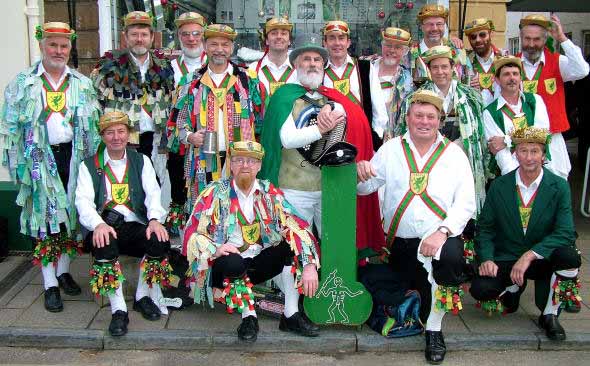 |
Wessex Morris Men were founded in
1957 by a group of young men (including our
present Foreman: Don Byfleet) out of The White
Horse Morris Men. The side is an all male side,
dancing mainly in the Cotswold tradition. The
side is an active member of the Morris Ring.
We dance out, mainly in the late spring and
summer months, around West Dorset and nearby.
During summer we dance every Monday evening (see
our programme for details). We also dance at
shows, fetes and other public and private
events.
|
Send email to the Bagman  (or phone 01258 817963 but
email is easier for him). (or phone 01258 817963 but
email is easier for him).
or email to the Squire 
or email to the Treasurer 
|
 |
The
Parkes Institute for the Study of
Jewish/nonJewish Relations
The
Parkes
Institute is a unique centre for the study of
Jewish/non-Jewish relations across the ages.
The Institute, through its research,
publications, teaching and outreach work, is
based on the library and life work of the
Christian scholar and activist, the Reverend
Dr James Parkes (1896-1981). The library now
consists of over 20,000 printed items – books,
pamphlets and journals – and is supplemented
by one of the largest collections of Jewish
archives in Europe, consisting of many
hundreds of individual and institutional
records, totalling millions of individual
items.
|
The
Parkes
Institute
History - School of
Humanities
The James Parkes Building
University of Southampton
Southampton - SO17 1BJ
UNITED KINGDOM
URL: www.soton.ac.uk/parkes
Email: parkes@soton.ac.uk
Tel: (+44)
23 8059 2261
Fax:
(+44) 23 8059 3458
|
 |
The Wessex
Singers is a Chamber Choir of about 40
singers, founded by its musical director
Christopher Dowie in 1979. This Wimborne choir
is promoted by Wimborne Music Society and
usually gives three main concerts a year,
sometimes with Wimborne Minster Chamber
Orchestra, as well as singing the occasional
Minster service in the absence of the Minster
Choir. The choir regularly premieres new
choral works, as well as performing from a
wide repertoire of established works.
|
email
-
Wessex
Singers |
 |
Wessex Male Choir was founded by
its Musical Director Robert Elliott in September
2001, and currently has around 60 members. The
choir has built a reputation for its
professionalism and entertaining repertoire, and
is in great demand for concert engagements.WMC
also has a proud tradition of charity support,
both nationally and in the Swindon area.Wessex
Male Choir occasionally enters competitions. We
were awarded the coveted Gold Cup for the best
choir at the Cheltenham Choral Festival in May
2008 and took second position in the Male Choir
competition at Llangollen International
Eisteddfod in July 2006, beating all other UK
choirs.
|
Musical Director:
Robert Elliott ,
Tel: 01793-853753
musical.director@wessexmalechoir.co.uk
|
 |
The Wessex Chamber Choir was
founded in 1990 under the musical direction of
Nicholas Woods, who established the choir as a
versatile and accomplished vocal ensemble. After
many successful years with Nicholas, we are now
delighted to have Richard Stevens as our musical
director. The choir consists of 25 to 30 mixed
voices. Members come from a variety of musical
backgrounds and live in North Hampshire, Surrey
and Berkshire. We meet weekly near Basingstoke
to rehearse throughout the year and perform in a
variety of venues across the region. In
addition, we visit cathedrals around the country
several times each year to take part in services
in the absence of their resident choir. We are
also available to sing at weddings and other
services in the area.
|
To discuss
booking the Wessex Chamber Choir or information
regarding ticket sales, contact us by email |
 |
|
 |
The Wessex
Collective
If literary fiction (story
telling) is the way that human beings can
understand and describe what history feels like,
we believe it should be relevant to universal
and historic human experience. We believe
also that literary fiction provides an
opportunity to recognize, with significant
impact, the problems of societies as well as
individuals.
At the Wessex
Collective we are publishing books
that demonstrate an empathy for human
vulnerability and an
understanding of how that is important
to the larger society.
Please click on an
author's name to find out more about their
work. |
© Copyright 2010 The Wessex
Collective. All Rights Reserved.
  THE
DARK
SIDE OF SOMERSET THE
DARK
SIDE OF SOMERSET
As
with most countries and lands in
England, Somerset has a rich history
that is shrouded in both myth and
legend. That history is spiced with
ghostly tails, mysteries and legends
of old. While the myths and legends
that haunt throughout England's
historic lands are similar in time
and circumstance, Somerset has it's
own famous entities, legends and
tales of the past. Below are Some
Somerset 2010 Halloween events +
some of the Somerset dark sides.
Ghost,
Ghouls
& Witches Day :A creepy
day of trails and storytelling
Toilets, car park Dunster Castle
Normal admission applies plus £2 per
trail 01643 821314
Exmoor Somerset
Wed
27 October
Halloween
Star
Party : A chance to join
members of the Wiltshire
Astronomical Society and use
their telescopes to sweep the
night sky. This time of year
you should see Uranus, the
planet discovered by.. more...In
front
of Number 1 Royal Crescent
Bath Somerset BA1
2LR
Sat
30 October
Ghost
Tours : Spooky tours at
Dunster Castle Toilets, car
park Dunster Castle Bookings
required Adult £10, Child £5
01643 821314 Exmoor Somerset
Sat 30 October
WEST
SOMERSET RAILWAY
HALLOWEEN GHOST EXPRESS.
Take the Halloween Express
for a round trip on a
steam train between
Bishops Lydeard (near
Taunton) and the Haunted
Garden at Stogumber
station for the
entertainment. The trip..
more...West
Somerset
Railway, Bishops Lydeard,
Taunton TA4 3BX
Sat 30 October
Halloween
Ghost
tours Listen to
spooky and sinister
stories about the
museum, its buildings
and exhibits, whilst
touring the museum. more...
Haynes International
Motor
Museum Somerset
BA22 7LH
Sat 30 October
Halloween
at
Brean :Are
you brave enough
to take the Brean
Down challenge and
face the wicked
witch in her
ruined fort? Be
sure to wear your
scariest costume
and remember, its
never too late to
turn.. more...Brean
Down Somerset
Sun 31 October
Watersmeet
-
Spooky
Halloween
Trail
:Enjoy a
spooky
Halloween
Trail around
the grounds of
Watersmeet
House Tea room
and shop.
Toilets. Steep
walk down to
Watersmeet
House.
Disabled
parking
available,please
call.. more...Exmoor Somerset
Sun 31 October
|
 King Arthur King Arthur
|
 St
Carantoc's Dragon St
Carantoc's Dragon
St Carantoc is famed for being one of
the early evangelists who came to the
West Country and his name is reflected
in various place names throughout the
West of England.
The story goes that St Carantoc was
looking for the place to set up his
mission and so he cast his marble altar
into the Severn Estuary saying that he
would build a church wherever it came to
rest.
King Arthur, some days later, was riding
across the marshes on his way to help
the people of Carhampton who had been
terrorised by a flying dragon. The King
spotted St Carantocs altar in the reeds
and has his men pick it up and bring it
with them. He noticed that on this
circule of marble were inscribed the
words St Carantocs Altar. At the time
King Arthur had no idea who St Carantoc
was.
A few miles further on he met a strange
man by the side of the road who asked
the King if he had seen the Altar of St
Carantoc on his journeys. Arthur was
intrigued and beleiving the old man must
be some kind of sorcerer he asked the
stranger his name.
The man answered gently "I am St
Carantoc", and Arthur bared his head,
realising that he was in the presence of
holiness.
Arthur said that he would strike a
bargain with the saint. If St Carantoc
could call up the dragon from the
marches then he would restore the Altar
to its owner.
St Carantoc nodded and turned away in
prayer, uttering a strange incantation
over the swamp. Immediately the bog
heaved and parted and amidst a terrible
smell the dragon appeared right in front
of the retinue. Only Arthur and the
Saint stood their ground while the rest
backed away in horror.
The dragon the trotted up to the Saint
and bent its head in submission. St
Carantoc then led the dragon to the
court of King Catho at Dunster Castle
where the dragon was forced to vow never
to hurt another soul again.
So transformed was the dragon by the
Saint that it never ate meat again and
only used its fiery breath to aid the
villagers in lighting bonfires in the
rain.
St Carantoc was granted land by the
Kings and built his chapel by the river
at Carhampton.
|
 The
Devil and the Blacksmith -
Fiddington The
Devil and the Blacksmith -
Fiddington
But one midnight he was called up by a
traveler whose horse had cast a shoe,
and when he looked at the rider of the
great black horse, he found it was the
Devil himself.
The terrified smith had the wit to
pretend he had left a hammer at this
Cottage and ran for the parson. The
parson, however, refused to return
nearer than the roadside hedge where he
remained to watch, having told the smith
if he valued his soul to keep his word
and shoe the horse - "But he must take
no payment!"
The smith set to work, and the Devil was
so delighted with the result that he
presented the man with a bag of gold,
but was told politely, "I never don't
take nought vor work done at night."
Baffled the Devil glanced around, and
caught a glimpse of the lurking Parson.
"If it hadn' a-been vor that old
blackbird in behind orchet," he yelled,
"I'd a had'ee vor zertain zure!"
With that both he and his horse
vanished.
 The
Starving
Monk The
Starving
Monk
Back in the days when there was a
stately home on the estate, the story
goes that a Catholic monk or priest was
secretly celebrating Mass at a time when
it was illegal.
When visitors arrived, he was hidden in
a priest hole or secret passage and
forgotten.
This does sound slightly dubious - would
you forget storing a priest in your
walls? But he is supposed to have
starved to death.
The last recorded sighting was in the
'70s when some teenagers saw a cowled
figure in a cloak which seemed to float
before vanishing into a wall.
|
 The Giants of
Stowey
The Giants of
Stowey
Some of the people fled to Stogursey,
other ran up hill for safety on
Dowsboro' Camp, and others, poor things,
just stayed where they were.
No one liked going past the Castle even
if they had to, and most of those who
did come back were pale and terrified.
The Giants had a horrible way of putting
their hands out of the hill and grabbing
a sheep, or a cow, or a man.
Once the monsters had tasted men's flesh
they grew ravenous. They made a riad on
Stogursey Castle, and beat it down flat,
and chased the Stogursey people till
they caught them in handfuls. When this
supply ran out they began again on the
folk of Nether Stowey.
Most of them were old (and tough) or
very young (and tender) for all the
able-bodied folk had run up the hills
and were quite safe in Dowsboro' Camp
having a fine time. They didn't know
what was going on so a poor old gaffer
tried to tiptoe past the Castle and tell
them, but an arm came out and got him.
Then a little lad got on one of his
father's hill ponies along with a
'dirft' of them, and went away past the
Castle at a stretch gallop. A hand di
come out, but it got such a kick it went
in again mighty fast and there was a
dreaful yell.
The folk on Dowsboro' heard that and got
ready to fight - but when the little lad
on his pony got to them they didn't wait
to give battle up there, No. "The men
from Dowsboro' beat down Stowey Castle'
and after that anyone could pass the
hill again - they still don't like doing
it at night.
Quantock saying:
'Men from Dowsboro' beat down Stowey
Castle, and men from Stowey beat down
Stogursey Castle.'
|
The
Squire of Norton Manor
One New Year's Eve the Squire of Norton
Manor was drinking and merrymaking at
Langford Budville, when he suddenly
decided he was going home. It was nearly
midnight, and everyone warned him not to
go, but he laughed and swore that he
didn't care if he broke his neck. He
climbed on his horse with such a volley
of oaths that they were glad to shut the
iron bolts behind him and draw up close
to the fire.
As for the Squire, he rode off merrily
till he came to Young Oaks, where his
horse swerved aside from a great pack of
black hounds. If the Squire had been
sober he would have started to pray, but
instead he told the hounds to go to Hell
(from which, of course, they had just
come) and slashed at them with his whip.
Green fire ran up the lash and scorched
the rider and horse, which bolted and
away went the Squire with the ghostly
pack behind him. On the Common at French
Nut Tree the horse stumbled and both the
horse and the Squire broke their necks.
Every New Year's Eve the Drunken Squire
is said to make the ride to Norton
Fitzwarren again and the unfortunate
ones may well meet him riding again to
get away from the devil's hounds. If you
should meet him then throw yourself on
the ground and pray that the hounds
don't get you as well!
The
Roundhead
We haven't heard from the local
Roundhead ghost recently but he was once
a regular in the woods at Stapleton.
This was the area where Cromwell
mustered his New Model Army before the
attack on Prince Rupert in Bristol.
For some reason, the ghost walks up to
walkers as if to speak to them and then
walks straight through them. It would be
interesting to know if those who saw him
were all staunch royalists and were
simply being snubbed.
|
The
Norton Fitzwarren Dragon
Somerset has a great deal of stories
about dragons but one of the most famous
is of the Norton Fitzwarren dragon. It
is said that after a great battle during
the Iron Age a mighty dragon was formed
from the pile of corpses. The dreaded
beast set about terrorising the area by
devouring children and destroying crops
growing in the fields. Angered by the
exploits of the evil dragon one man
stood up to face the foe.
A young man called Fulke Fitzwarren took
on the beast in single combat. After a
long and bloody struggle, he pierced the
dragons heart and cut off its head.
In All Saints Church at Norton
Fitzwarren stands a sixteenth-century
rood screen that depicts the gruesome
story.
Many now believe that legends of Dragons
are associated with the invasion of the
Danes into the County.
The
great dragon of Aller
Another Dragon was the great dragon
of Aller, near Langport, a flying
serpent which breathed flames and
poisonous fumes - yet, curiously, was a
milk addict.
It attacked milkmaids, but was more
interested in their buckets of milk than
their bodies, and even sucked cows dry.
It was finally slain by John of Aller
who smeared his body with pitch and put
on a thick mask to protect himself from
the fire and fumes.
He stabbed it with a nine foot long
spear still preserved in Low Ham church
and walled up its cave so its brood
starved to death (no mention of a Mrs
Dragon, you notice). There is an effigy
of John of Aller in the village church.
|
|
Taunton Castle
Taunton Castle is said to
be haunted by the tramp of soldiers
bringing the Sedgemoor prisoners to the
Bloody Assizes in 1685 after Monmouth's
Rebellion.
The landing of Castle House is haunted
by a man in riding dress and heavy
boots. He is dark and wears a full
Charles II wig. He has a sword, a sash,
gauntlets, and a heavy pistol in his
belt. He tramps up and down restlessly.
|
Heddon Oak, Crowcombe.
Tradition says that half a
dozen fugitives from Sedgemoor
(Monmouth's Rebellion) were hanged on
Heddon Oak. Chains can be heard
clanking, and there are moans from
choking men. Some have heard the noise
of horses galloping up the hill but
nothing ever arrives.
|
The Blue Lady - Crowcombe
The Elizabethan part of
the Rectory at Crowcombe is haunted by
the Blue Lady. She appears at very rare
intervals, and then only to children.
|
|
Corpse
Candles
It is said that many have witnessed
strange spectral light floating in
mid-air foretelling the demise of
someone very close.
|
The Spunkies
Somerset's version of the Will o' the
Wisps. Believed to be the souls of
unbaptised children, doomed to wander
until judgment day. Some believe they
also forewarn of the approach of death.
On Midsummer Eve night all the spunkies
go to church to meet the newly dead
children.
|
The Yeth (or Yeff)
Hounds - the Wild Hunt
The Devils own hunting dogs out to catch
a few souls no doubt! If they catch up
with you the best thing to do is throw
yourself on the ground face down and
they should pass you by. Cannington Park
is said to be the devil's hunting ground
from where the Yeth hounds start off for
a nights hunting.
|
|
Burgess
the Miner
Burgess the miner was a
widower, who lived with his little
daughter in a cottage in White Water
Combe. After a time he fell in love with
a worthless woman, and as they found the
child a nuisance he murdered it and
threw the body down a mine-shaft. This
proved no concealment, for a mysterious
light shone above the shaft, so Burgess
took up the body, buried it hastily in a
bank side and left the moor. Two
sheep-stealers saw a rag sticking out of
some loose earth and thought a sheep had
been hidden there, for this was the
usual sign. When they began to scrape
back the earth, however, they came
across a child's hand. Burgess was
pursued and caught. He was hanged at
Taunton Jail in 1858. There is still a
ghostly light to be seen at the place of
the murder but it is very unlucky to see
it.
The
St George ghost
Air Balloon Road, St
George, Bristol
In 1998 Victoria and Steven Cross asked
the Bristol Evening Post for help in
tracing the ghosts that had haunted her
home in St George, Bristol.
Victoria, aged 25, said: "Old coins from
the 1930s turned up in the house for no
reason we could understand, and a friend
said she saw a vision of a man in one of
the upstairs rooms.
"We had builders in and they could hear
footsteps when they were alone in a
room. "We had a puppy that used to
get very distressed at night in certain
rooms. There was definitely something
strange going on."
The couple, who have a one-year-old son
called Caleb, quickly called in a medium
who said there were four ghosts in the
Victorian house.
One was a boy called Tom, another was a
woman in a black dress with a high
collar. The third was a teenager called
Peter who died in the house, and the
fourth was a man called David.
Victoria: "We haven't had any more
trouble since the medium came but I
would like an explanation of where the
ghosts came from. I'm sure there must be
a good reason because I've heard other
people in the area say they've had
similar hauntings since."
|
Despatch Rider
Morton House,
Rossiter's Hill, Frome, Somerset
Morton House often boasts some
impressive floral displays which prompts
some visitors to the area to try and
capture the sight on film.
In 1990 Reg Wickens did just this, but
the picture that was processed was not
as he had imagined - the house and
displays could still be seen but a
shadowy figure had appeared across the
picture.
Theories that it could be the shadow of
Reg have been discounted given the angle
that the sun would have been at at the
time the picture was taken. The
possibility that it might be a double
exposure was also discounted given the
camera that Reg used.
So what was this strange apparition that
seemed to take over the picture. Reg
thought it looked like the shadow of a
wartime dispatch rider coming towards
the camera on his motorcycle.
He could make out a leather helmet,
goggles and a long black raincoat which
was the dress for dispatch riders in the
war years. So he started his own
research into the area to try and solve
the mystery.
After making enquiries with locals, Reg
found out that not one but three
dispatch riders had died in an accident
and one of them - Bombardier Thomas
Gladdis - swerved and went into the wall
right where Reg was standing when he
took the photograph.
|
The Wookey Hole Witch
Wookey Hole Caves, near
Wells in Somerset, have been
inhabited for 70,000 years, when
they were explored by Neanderthal
Man, in his search for a home
offering shelter and security. Numerous travellers from
the Romans onwards have made
reference to the caves, showing that
even when vacated as a home for Iron
Age people, they remained a place to
visit and marvel at.
In 189 AD, the Roman
diarist Clement of Alexandria
relates to the "clashing of numerous
cymbals", a known phenomenon where
changes in air pressure produce
extraordinary noises. The caves were also,
according to legend, the home of an
unpopular witch who didn't get on
with her neighbours.
The village clubbed
together to decide what to do and
decided to send in a monk to have a
word with her. After failing to
mediate successfully he followed her
down Hell's Ladder where he
apparently found her turned to
stone.
The most likely
explanation is that he saw a piece
of rock in the shadows that had eroded into a witch-like
shape, but it makes a good
story. In
this chamber with a sandy shore
reaching down to the subterranean
River Axe the outline of the witch
can be seen, her eyes fixed on the
river. The
story that the monk turned the witch
to stone was first written down in
1748, even though the story had been
handed down for generations.
It wasn't until 1912
that Mendip cave explorer H.E. Balch
found evidence that could
substantiate the story - at least to
a degree.
He found goats had
been stabled at the entrance to the
cave, a milking pot nearby and even
a ball that had been made from a
stalagmite. But
there was more - a comb made from
red deer antler, a set of human
bones and some tools, all of which
are now exhibited in Wells Museum.
The witch - if it was
her - had apparently died of disease
or violence on the floor of her cave
Skid Marks The
Spot
A38, Barrow
Gurney Reservoir, near Bristol.
The spirit of a departed life has almost
caused others to lose theirs when it
suddenly walks out in front of them on
the A38 south west of Bristol.
Many people have reported exactly the
same experience, which is typified by
the first witness.
This young man was driving along the
road when all of a sudden a lady in a
white coat appeared to be crossing the
road just in front of him. He slammed on
his brakes and skidded across the road,
luckily managing to keep control of the
car.
When he came to a halt he realised that
there was no-one there, he went to
investigate that bit of the road and
found that there were lots of skid marks
in exactly the same spot.
Indeed several other people have since
come forward to say that they
encountered the same lady on that
stretch of the road.
|
The Gurt Wurm
of Shervage Wood
|

Every year, in late September, folk
gather in St Matthew's Field for
Bridgwater's famous fair. From right
across the town they come, and from the
hills and hamlets too – from
Timberscombe, Triscombe, Crowcombe and
Hestercombe, from Holford and Stolford,
Stogursey and Stogumber. They come to
buy and to sell, to entertain and to be
entertained, to meet old friends and to
make new ones. It's been this way for
hundreds of years!
But this particular September, of which
I now speak, things were not the same as
usual. Folk set out their stalls in
silence; no one laughed; there was a
watchful, nervous look on farmers' faces
as the animals were herded into pens.
There were whisperings and mumblings and
mutterings in corners.
A cloud of dark rumour was gathering,
and casting its shadow over the town:
"Does ee fancy there be fewer sheep this
year?"
"Oh-arr. And fewer ponies."
"'appen it be true what they'd say about
the Wurm."
"'appen. They say that it do roam the
hills by night. Eats any livin' thing in
its path!"
"Eats sheep and deer and ponies they'd
say – cattle too!"
"Gorges itself by
night and sleeps by day up in Shervage
Wood."
"Body thick as three great oak trees,
they d' say!"
"Not long, I reckon, 'til it do crave
some human flesh!."
"Young shepherd lad's gone missing up
near Stowey."
"And two stable lads, I heard, from
Crowcombe way."
Meanwhile, in a
cottage out at Crowcombe, a widow by the
name of Maggie Conibeer was busy making
whortleberry tarts when she heard a loud
knocking at her door and a cheerful
voice calling her name:
"You there, Maggie? 'Tis Joe Tottle from
Stogumber. Mebbees you have some jobs
for I?"
|
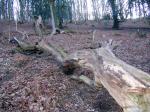
Joe was a woodcutter, a simple, friendly
fellow, who was partial to Maggie's
cooking and particularly fond of
Maggie's fine cider. In exchange for a
good meal and a pint of cider, he would
often chop wood or do other small jobs
about the cottage.
(I should mention, at this point, that
although most folk on the Quantock hills
lived in mortal fear of 'The Gurt Wurm',
news of the deadly creature had not yet
reached Stogumber!)
Maggie agreed with Joe that if he picked
some whortleberries and chopped some
wood, he could go with her to Bridgwater
Fair on the horse and cart, help sell
the whortleberry tarts and take a share
in the earnings.
Delighted with the plan, Joe set off up
the steep hill from Crowcombe, with one
of Maggie’s baskets on his arm.
He'd a napkin full of bread and cheese
and a flagon of Maggie's strongest cider
to see him through the day.
"Be sure ee keep away from Shervage
Wood!" Maggie called after him. But Joe
was half way up the hill and whistling
loudly to himself. He didn't hear her.
By mid-day the sun was blazing overhead.
Joe's basket was full of plump, purple
whortleberries, but the flagon of cider
was almost empty. He had wandered
further than he intended and had reached
the edge of Shervage Wood. Time to rest
in the shade, he thought, and have a
bite to eat. The wood was dark and
eerily silent, but Joe welcomed the cool
shade and the peace. Settling himself
down on a large fallen tree, he tucked
into his lunch. Suddenly the tree trunk he was
sitting on began to wobble.
"Whoa! Whoa!" said Joe, steadying
himself. "This be good zyder and no
mistake!" He drained the flask and
carried on eating. |
A moment later the trunk began to move
again. Not just a wobble this time, but
a squirming and a writhing and a
wriggling, as if the fallen tree were a
living creature! Joe was a good-natured
fellow mostly but, once roused, his
temper could be fearsome.
"Spoil my meal, would ee?" he bellowed,
leaping to his feet. "Take that! And
that!! And that!!!" So saying, he split
the mighty 'tree' in half with three
clean blows of his axe.
The Quantock hills trembled and an
ear-splitting howl of raw pain echoed
through Shervage Wood! Joe gaped in
amazement as the top half of the 'tree'
ran, roaring through the woods in the
direction of Taunton and the lower,
headless half scuttled off towards
Minehead.
He looked down at his axe and saw that
it was dripping with dragon's blood!
By the time Maggie and Joe reached
Bridgwater Fair, they had a tale worth
telling. Folk queued to buy Maggie's
whortleberry tarts and hear her story,
and Joe had more cider than he could
drink as they urged him to tell and tell
again, just how the dragon met its end.
Did Maggie and Joe marry and live
happily ever after? Well, that I can't
say, but what I can say is this – they
both lived well off that tale for many
years to come!
And what became of the Gurt Wurm, you
ask? Well, it seems that one half
reached Kingston St Mary and the other
half ended up in Bilbrook, near
Minehead. Both halves of the beast,
separated by so many miles, finally
died.
So that is the story of what happened
when a simple woodcutter sat on a Wurm.
But some folk say that, before Joe
killed it, the Gurt Wurm laid an egg in
Shervage Wood.
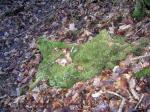
Now dragons' eggs, as you probably know,
take hundreds of years to incubate. By
my calculations, this one should be
ready to hatch just about …………… NOW!!!! |
|
Stron Easton Par
is a magnificent Palladian house near
Midsomer Norton in Somerset,
home to the ghost of the murdered
parlour maid who stalks the top floor.
Achtung!
The ghost of a Luftwaffe officer has
been seen at Hengrove Park, the former
site of Whitchurch airport. Could be
he's trying to get a ticket to the
multi-screen cinema.
|
The
Ring O' Roses
(The Holcombe Inn) located near Radstock
in Somerset is a 17th
century Inn steeped in history and
intrigue. Rumour has it a man stalks the
rooms at night, checking on his daughter
who was bequeathed to a noble, ran away
with a commoner, only to be imprisoned
by her father in a room upstairs. |
Porch Presence
Wedmore,
Somerset
Not all ghosts are scary and in a
pillared porch attached to a 17th
century house in Wedmore, the benign
presence of the doctor who once used the
house as a cottage hospital can still be
felt. Dr John Westover was way
ahead of his time in the treatment of
the mentally ill, preferring to treat
his patients with kindness and gentle
care rather than the ill-treatment which
was the norm at the time.
|
 Molly The Tea
Lady
Yeovil Railway
Station, Somerset
Molly The Tea
Lady
Yeovil Railway
Station, Somerset
The new owners of Yeovil railway station
buffet didn't believe the stories that
is was haunted when they took it over,
but they do now.
Molly the tealady who used to work at
the buffet and who died on the station
platform in the 1960s, couldn't bear to
be away from the place.
Her ghost is thought to be responsible
for swapping cutlery around and turning
things on and off, but she always stops
when she's asked to!
Duchess
of Beaufort
Vassals Park, Fishponds,
Bristol
This spirit has been seen by a lot of
people over the years as they've gone
through the park.
Two teenagers were halfway across the
footbridge in the park that leads over
the River Frome when they saw the hooded
figure dressed in a cloak with its arms
outstretched.
They couldn't make out a face or feet
and the figure gave the impression that
it was floating. After moving a little
way onto the bridge the spirit turned
around and vanished into the wall just
past the end of the bridge.
Other teenagers from the same youth club
went to revisit the spot for the next
few nights and saw an inexplicable white
light floating near the wall where the
figure had disappeared.
A lady went with others to check out the
spot and she reported hearing monks
chanting.
|
The A38 Hitchhiker
Nr Taunton,
Somerset
The solitary and ghostly hitchhiker
haunting different stretches of road is
an image that has prevailed over the
years.
However, a phantom hitchhiker, said to
wear a grey overcoat, appears to be
haunting a stretch of the A38 near
Taunton, in Somerset.
In August 1970 a woman from Taunton
encountered the apparition standing in
the centre of the road and was forced to
veer to avoid him.
Stopping to tell him what she thought of
his choice of place to stand, she
discovered that he had disappeared.
Local newspapers found a number of
people who had encountered the same
apparition at the same place, including
a motorcyclist who had crashed as a
result.
These local reports prompted lorry
driver Harry Unsworth to tell how he had
encountered the man several times in
1958.
At the first meeting Unsworth gave the
man a lift, having picked him up wet
through from the rain at three o'clock
in the morning.
The man in the grey overcoat spent the
journey of four miles recounting tales
of accidents that had occured during the
last few days and was not exactly bright
company for the driver.
Mr Unsworth picked up the same passenger
several times, usually in the pouring
rain and wandering along with a torch in
his hand.
|
The Skull Of Theophilus
Broome
Higher Chilton
Farm, nr Yeovil, Somerset
You often hear creepy stories of
dismembered parts of the body haunting
people so that they might be reunited
with their body. But at Higher Chilton
Farm the opposite is true.
The skull of Theophilus Broome has
remained at the farm at the request of
its owner who died in 1670. A Civil War
soldier during the 1640s, he had become
horrified at the mutilation of bodies
carried out by Royalist troops at the
time.
Mr Broome was scared that his head might
be severed from his body and impaled on
a stick as a trophy, common practice for
Royalist troops.
So before he died he asked his sister to
ensure that his skull never left the
farmhouse.
It seems that Theophilus is a bit of a
cantankerous ghost, and when people have
tried to remove the skull they have been
subject to terrible screaming until it
is returned.
Likewise when TV crews have tried to
film there, they are sent packing by the
old ghost.
He doesn't even seem to want to be put
back with his body all these years down
the line, when someone attempted to do
it the spade broke in half as they tried
to exhume the body.
It seems that as long as the skull
remains in the house, and that the house
is well looked after, the ghost can be
very nice, but mess around with either
and there'll be skullduggery before you
know it.
|
|
The Girl on the Roof
Sally was a serving girl
on a Hanham,Bristol farm during the
Civil War and was killed by Cromwell's
troops for refusing to tell them where
some Royalists were hiding.
The story goes that she tried to escape
through a trap door on to the barn roof
because that's where she has been
hanging out ever since.
|
Evil Dwarf Highwayman
Jenkins Protheroe was a
dwarf highwayman who begged for money
and then held up and robbed passers-by
who didn't give enough.
Jenkins was hanged in 1783 at the top of
Pembroke Road,Bristol.. He still haunts
the area.
|
The Union Activist
This was a ghostly figure
who used to appear in the Spillers
animal feed mill at Avonmouth - but only
to Transport and General Workers Union
members.
The general theory was that he was
trying to join the union, although
frightening the brothers seemed an odd
way of going about it. "We won't be
beaten by a ghost" said their shop
steward stoutly. And he added: "As far
as I know, it's not a card carrying
member."
Everybody out!
|
|
|















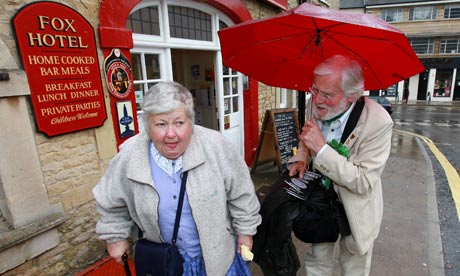
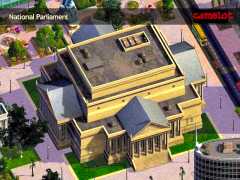
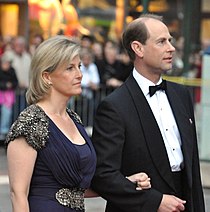
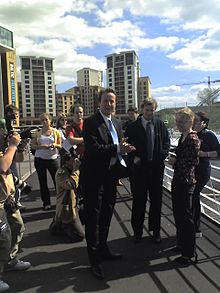
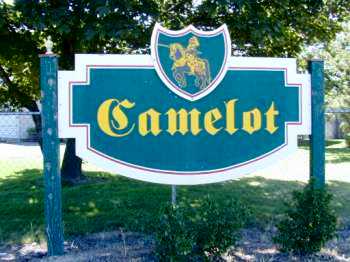 Simtropolis
Pictures of
Simtropolis
Pictures of 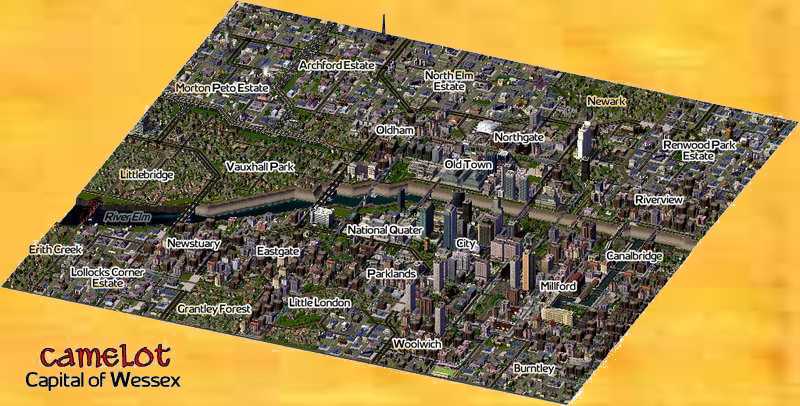
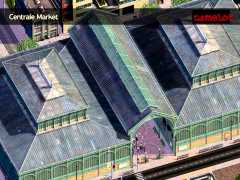






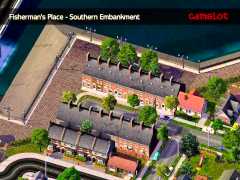


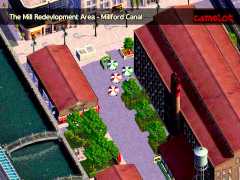



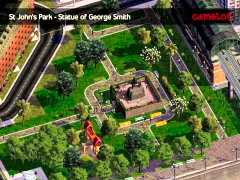


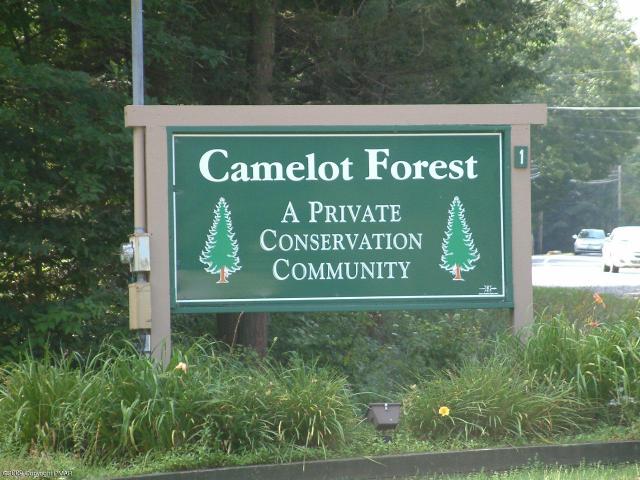

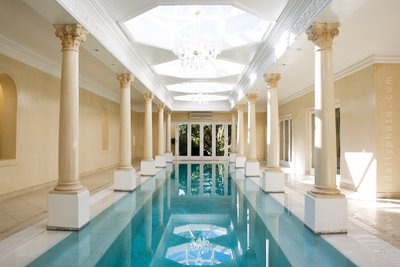








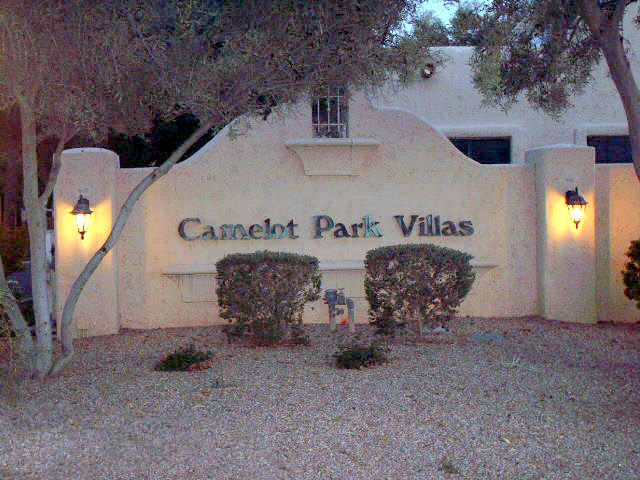



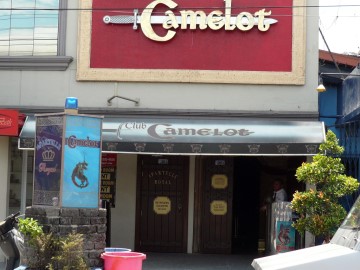




























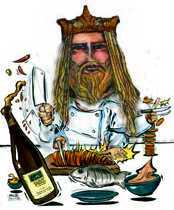


 Im
Cerdic, First King of Wessex. The Royal
Family of England descends from me. I
landed in Briton in 497AD and my Kingdom
became the most powerful in the land - it
was called Wessex. (West Saxons) and
Camelot was my capital. Wessex
became England with the amalgamation of
Mercia & Northumbria. After the Norman
Conquest Wessex was divided up into eight
different counties: Berkshire, Devon,
Dorset, Gloucestershire, Hampshire,
Oxfordshire, Somerset and Wiltshire. My
site covers the attractions & Events
in those eight Counties plus the four
GREATER WESSEX counties of Cornwall,
Kent, Surrey & Sussex. Visit the
Attractions
in
the ancient kingdom of Wessex .Tarry
a while. Stay in our hotels,
guesthouses ,caravans or campsites
We thank the many hotels, Guest
Houses, Caravan camping sites,
internet cafes, visitor centres,
tourist offices,magazines,
newspapers and County shows for
freely advertising our sites.
Im
Cerdic, First King of Wessex. The Royal
Family of England descends from me. I
landed in Briton in 497AD and my Kingdom
became the most powerful in the land - it
was called Wessex. (West Saxons) and
Camelot was my capital. Wessex
became England with the amalgamation of
Mercia & Northumbria. After the Norman
Conquest Wessex was divided up into eight
different counties: Berkshire, Devon,
Dorset, Gloucestershire, Hampshire,
Oxfordshire, Somerset and Wiltshire. My
site covers the attractions & Events
in those eight Counties plus the four
GREATER WESSEX counties of Cornwall,
Kent, Surrey & Sussex. Visit the
Attractions
in
the ancient kingdom of Wessex .Tarry
a while. Stay in our hotels,
guesthouses ,caravans or campsites
We thank the many hotels, Guest
Houses, Caravan camping sites,
internet cafes, visitor centres,
tourist offices,magazines,
newspapers and County shows for
freely advertising our sites.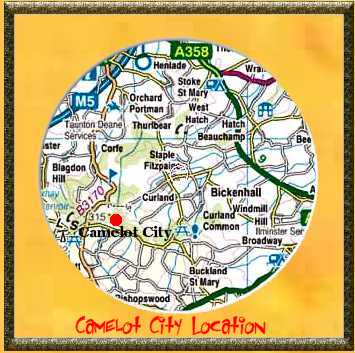 Geography
of
Geography
of 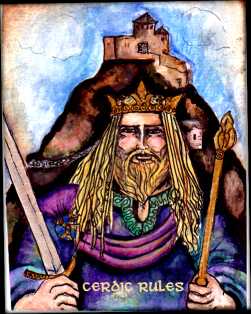
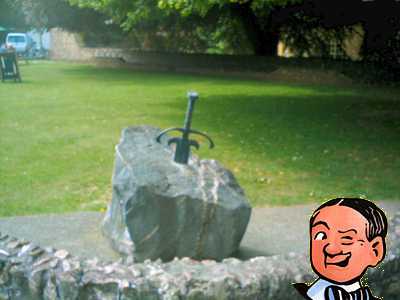
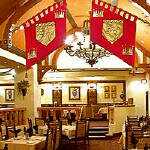


 Wessex folk have a
Shibboleth. It is, Thee cassen zee as well as
thee coo'st, ca'st? And if thee coo'st thee oosen!
Anyone who can understand that, by ear
alone, can qualify as a Wessex man. I think most
Cornish could. The origin of Wessex is, of
course, a matter of history. Wessex, the country of
the West Saxons, was the largest, most enduring and
most civilized of the Anglo-Saxon states. Our Royal
family is descended directly from the West Saxon
kings, the first of whom was the half-legendary
Cerdic, who, according to the Anglo-Saxon
Chronicles, landed with a war band somewhere on the
south coast in the year 495. The Wessex royal family
provided the first king of all England, Egbert. In
878, 53 years later, Wessex, alone of all the
kingdoms of western Christendom, fought the
rampaging Northmen to a standstill. Alfred, the hero
of that epic, is the only English king ever to have
been awarded the title 'the Great'.
Wessex folk have a
Shibboleth. It is, Thee cassen zee as well as
thee coo'st, ca'st? And if thee coo'st thee oosen!
Anyone who can understand that, by ear
alone, can qualify as a Wessex man. I think most
Cornish could. The origin of Wessex is, of
course, a matter of history. Wessex, the country of
the West Saxons, was the largest, most enduring and
most civilized of the Anglo-Saxon states. Our Royal
family is descended directly from the West Saxon
kings, the first of whom was the half-legendary
Cerdic, who, according to the Anglo-Saxon
Chronicles, landed with a war band somewhere on the
south coast in the year 495. The Wessex royal family
provided the first king of all England, Egbert. In
878, 53 years later, Wessex, alone of all the
kingdoms of western Christendom, fought the
rampaging Northmen to a standstill. Alfred, the hero
of that epic, is the only English king ever to have
been awarded the title 'the Great'.







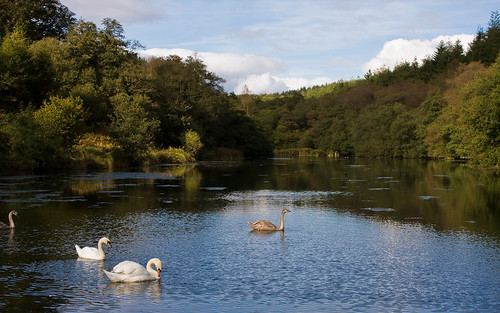




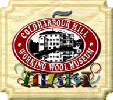

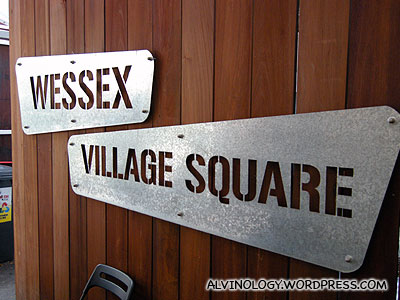







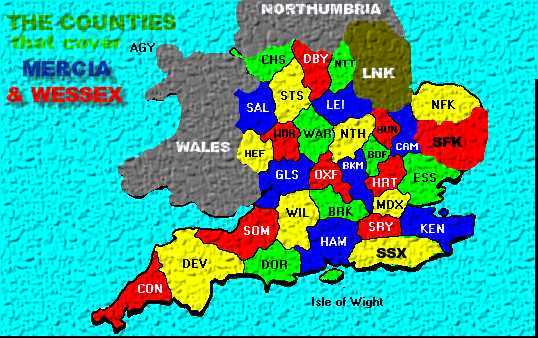



























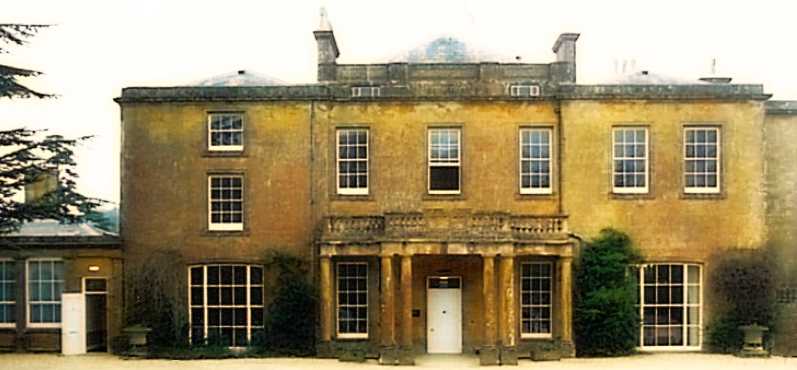 I love the
part of southern England that once comprised
the Kingdom of Wessex.
I love the
part of southern England that once comprised
the Kingdom of Wessex. 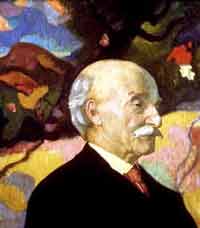


 If you are looking
for a bit of Free Fishing in the
UK Click on Picture to left
If you are looking
for a bit of Free Fishing in the
UK Click on Picture to left STORMY FRONT
suggests You Check For
Traffic Problems
STORMY FRONT
suggests You Check For
Traffic Problems



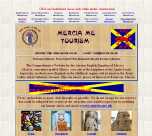

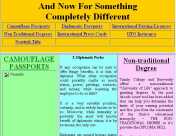












 Unlike Sloanes, who cling to
their class background with goofy,
panicky enthusiasm, Wessex Girls are
generally uninterested in social
position. They are reasonably
well-bred, of course most of them
were raised in the home counties or in
the smarter parts of the Chilterns
but they have discovered that, in
modern Britain, overt snobbery is a
career liability. On the other hand,
unlike Essex Girls, they have not the
slightest interest in drinking to
excess, staggering about at parties or
using inappropriate language.
Unlike Sloanes, who cling to
their class background with goofy,
panicky enthusiasm, Wessex Girls are
generally uninterested in social
position. They are reasonably
well-bred, of course most of them
were raised in the home counties or in
the smarter parts of the Chilterns
but they have discovered that, in
modern Britain, overt snobbery is a
career liability. On the other hand,
unlike Essex Girls, they have not the
slightest interest in drinking to
excess, staggering about at parties or
using inappropriate language. It's
Official Wessex Girl Comes
down Fastest :
It's
Official Wessex Girl Comes
down Fastest : 







 THE
DARK
SIDE OF SOMERSET
THE
DARK
SIDE OF SOMERSET King Arthur
King Arthur

 The
Starving
Monk
The
Starving
Monk






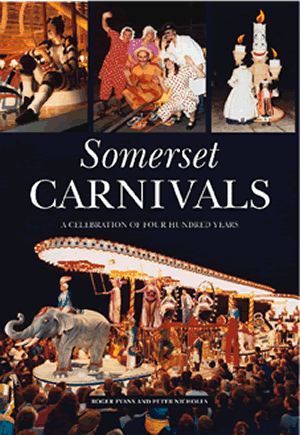








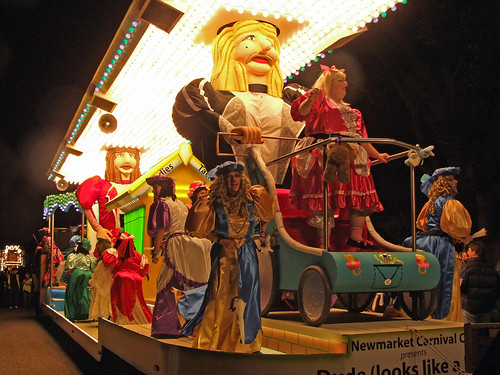










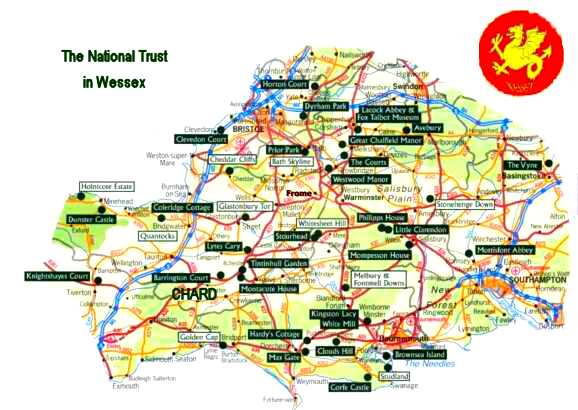









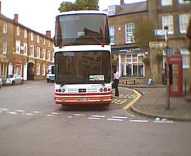














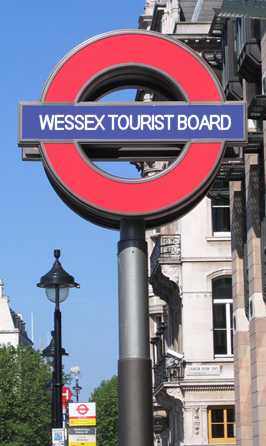
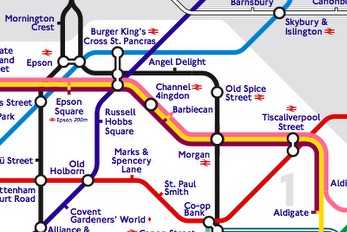



 Literary
Wessex Day 1 We will rendezvous at our
London hotel from where, in the afternoon, we
will set out for the Charles Dickens Museum at
48 Doughty Street for a guided tour. We will
then walk through Dickensian London to Fleet
Street, the city’s old publishing centre, to Ye
Olde Cheshire Cheese, where Dr Samuel Johnson,
James Boswell, David Garrick, William Makepeace
Thackeray, Dickens, Oscar Wilde and W.B. Yeats
Rhymers Club met to discuss their work.
Literary
Wessex Day 1 We will rendezvous at our
London hotel from where, in the afternoon, we
will set out for the Charles Dickens Museum at
48 Doughty Street for a guided tour. We will
then walk through Dickensian London to Fleet
Street, the city’s old publishing centre, to Ye
Olde Cheshire Cheese, where Dr Samuel Johnson,
James Boswell, David Garrick, William Makepeace
Thackeray, Dickens, Oscar Wilde and W.B. Yeats
Rhymers Club met to discuss their work. 
 I take a walk every day for an
hour before dinner and this is generally my
walk. I go out at the back gate across on
street, into the Cathedral yard, along a paved
path, past the beautiful front of the
Cathedral, turn to the left under a stone
doorway – then I am on the other side of the
building – which leaving behind me I pass on
through two college-like squares seemingly
built for the dwelling place of deans and
Prebendaries – garnished with grass and shaded
with trees. Then I pass through one of the old
city gates…
I take a walk every day for an
hour before dinner and this is generally my
walk. I go out at the back gate across on
street, into the Cathedral yard, along a paved
path, past the beautiful front of the
Cathedral, turn to the left under a stone
doorway – then I am on the other side of the
building – which leaving behind me I pass on
through two college-like squares seemingly
built for the dwelling place of deans and
Prebendaries – garnished with grass and shaded
with trees. Then I pass through one of the old
city gates… 
 We will be given a tour of the
area, Julia Margaret Cameron’s home and studio,
Dimbola Lodge and Tennyson’s home. Our guide
will be
We will be given a tour of the
area, Julia Margaret Cameron’s home and studio,
Dimbola Lodge and Tennyson’s home. Our guide
will be  Literary
Wessex Day 5 In the morning we set off
on our exploration of the heart of literary
Wessex - sites and landscapes associated with
Thomas Hardy and the Vale of the Little Dairies.
We will visit Sturminster Newton, where he wrote
The Return of the Native (1878), Tess’s Cottage,
and have lunch at what was The Pure Drop Inn at
Marnhull.
Literary
Wessex Day 5 In the morning we set off
on our exploration of the heart of literary
Wessex - sites and landscapes associated with
Thomas Hardy and the Vale of the Little Dairies.
We will visit Sturminster Newton, where he wrote
The Return of the Native (1878), Tess’s Cottage,
and have lunch at what was The Pure Drop Inn at
Marnhull.  In the afternoon we will visit
Sherborne Castle, built by the poet, courtier
and adventurer, Sir Walter Raleigh (1552-1618),
who in 1594 wrote The Passionate Man’s
Pilgrimage, in 1594. He developed the
castle from a medieval hunting lodge after
persuading Queen Elizabeth I to allow him to buy
the deer park from the church.
In the afternoon we will visit
Sherborne Castle, built by the poet, courtier
and adventurer, Sir Walter Raleigh (1552-1618),
who in 1594 wrote The Passionate Man’s
Pilgrimage, in 1594. He developed the
castle from a medieval hunting lodge after
persuading Queen Elizabeth I to allow him to buy
the deer park from the church.  Literary
Wessex Day 8 Glastonbury, the site of
the legends of King Arthur and the ancient home
of Christianity in England, remains a spiritual
centre and place of pilgrimage. Its history
inspired medieval writers and chroniclers, such
as Geoffrey of Monmouth and Thomas Malory, as
well as Tennyson’s Idylls of the King (1859),
John Masefield’s novel, The Badon Parchments
(1948) and A Glastonbury Romance (1933)
by John Cowper Powys. We will visit the Abbey
ruins where monks are believed to have found the
remains of Arthur and Guinevere in 1191 and the
Tor where some suggest Joseph of Arimathea and
his followers buried the Holy Grail.
Literary
Wessex Day 8 Glastonbury, the site of
the legends of King Arthur and the ancient home
of Christianity in England, remains a spiritual
centre and place of pilgrimage. Its history
inspired medieval writers and chroniclers, such
as Geoffrey of Monmouth and Thomas Malory, as
well as Tennyson’s Idylls of the King (1859),
John Masefield’s novel, The Badon Parchments
(1948) and A Glastonbury Romance (1933)
by John Cowper Powys. We will visit the Abbey
ruins where monks are believed to have found the
remains of Arthur and Guinevere in 1191 and the
Tor where some suggest Joseph of Arimathea and
his followers buried the Holy Grail.  Literary
Wessex Day 11 In the morning we
conclude our tour of literary Wessex proper with
a visit to Salisbury Cathedral, inspiration to
Anthony Trollope’s The Warden (1855) and
William Golding’s The Spire (1964).
Golding taught at Bishop’s Wordsworth school
next to the cathedral.
Literary
Wessex Day 11 In the morning we
conclude our tour of literary Wessex proper with
a visit to Salisbury Cathedral, inspiration to
Anthony Trollope’s The Warden (1855) and
William Golding’s The Spire (1964).
Golding taught at Bishop’s Wordsworth school
next to the cathedral.  Literary
Wessex Day 12 On our final morning we
will visit Westminster Bridge, about which
Wordsworth wrote Earth has not anything to
show more fair following his walk on 3rd
September 1802 across the bridge, the Houses of
Parliament, Westminster Abbey and Poet’s Corner,
where there are monuments to England’s most
celebrated poets and writers.
Literary
Wessex Day 12 On our final morning we
will visit Westminster Bridge, about which
Wordsworth wrote Earth has not anything to
show more fair following his walk on 3rd
September 1802 across the bridge, the Houses of
Parliament, Westminster Abbey and Poet’s Corner,
where there are monuments to England’s most
celebrated poets and writers. 








